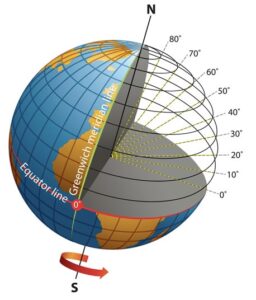Americanism Redux
July 29, 250 years ago today
It’s a river called “Mad”, flowing into a river called “Big Waters”, or Miami as it’s known in the language of one native people, flowing into a river so appealing that another native people used their rival language to find the word for “Beautiful”…
The Ohio.
In these watered lands a four-year old boy lives with a large family. His father had met his mother hundreds of miles south of here, near a river named after its people, the Alabama. After marriage, they stayed with the woman’s family and bid goodbye to the Alabama, traveling north about a dozen years ago to a new place and, now, their new home in a village nestled among the Mad, the Miami, and the Ohio.
The father/husband, Puckeshinwa, and the mother/wife, Methoataske, have important stories to tell the four-year boy when he’s slightly older. They’ll tell him that on the day he was born a brilliantly bright light flashed across the night sky. Surely a sign, his parents chose the Shawnee word for “shooting star” as his name, Tecumseh. They’ll also tell him about the origins of his village when, years before, an enemy warrior was burned at the stake and, from the ashes, he is said to have risen again. Piqua is the Shawnee word for “ashes” and the village where Tecumseh lives with his mother, father, and siblings.
Tecumseh will know these stories before he begins his vision quest, a ritual of passage and purpose that the Shawnee, unlike other Native tribes, will hold for him before he is twelve years old.
Unknown to young Tecumseh or his parents, however, is that also on this day 250 years ago at a river called Kain-tuck-ee, many miles to the south, a man named after a Biblical prophet sits with his companions near a cave. They are tired from a ritual of their own, called a “Long Hunt”. The man is Daniel and the men near the cave also call him Boone. Boone and his hunters have killed buffalo, bears, wolves, panthers, deer, beavers and much more. They rest beside the glowing coals of a campfire and if the sky stays clear tonight they will see the stars and wonder at the wonder of the land beneath them. A paradise place.
Fire and smoke and ashes. Stars and skies and heavens.
250 years ago today, in the trees, the sounds of whining cicadas and squawking blue jays reach the ears of a four-year old boy and a 37-year old man separated by miles of what will be called the dark and bloody ground. But they’ll also be joined by lines that they cannot see, drawn and traced thousands of miles from them.
Also
An invisible line. There, though you can’t see it.
An imaginary line. There, though you have to envision it.
Both the invisible and the imaginary were drawn nine summers ago in the Proclamation of 1763. As the French and Indian War ended, British officials sought to control the quest for land by British colonists living in the thirteen colonies along the Atlantic Coast. From desks and halls located in England, members of Parliament and of King George’s retinue of advisors and appointees drew a line on maps, tracing the crest of the Appalachian Mountains and declaring that British settlers would no longer be permitted to take land west of the line marked in black ink. No land beyond for taking and keeping, henceforth. So said the Proclamation’s designers, eager to prevent another gruesome conflict after the French and Indian War.
The Proclamation Line meant exceptions. Beginning almost the hour it was drawn people with money and influence arranged for carve-outs and set-asides in backroom deals, corrupt bargains, shady agreements, and, with native tribes, hollow treaties that only indigenous people took seriously. Sometimes it’s the invisible lines that bind the tightest and slice the deepest.
250 years ago today the line is, possibly, a wall for the people who surround four-year old Tecumseh. It is a promise of protection that stops further white encroachment westward.
250 years ago today the line is, practically, a hurdle for the people surrounding 37-year old Daniel Boone. It flaunts, daring an approach from families and individual people who seek something unavailable in the east’s older towns, townships, and counties.
Boy near a river and man near a cave stand today west of the line that neither can see.
You Now
Invisible lines are not laws or rules. They don’t get written down, printed, and pressed together between a front and back cover. They don’t glow on a screen.
Nevertheless, invisible lines are real and present. They are all around you regardless of whether you choose to heed them. They exist in the minds of people.
Power and authority, liberty and freedom, rights and responsibilities, each can be expressed not only in words but also through invisible lines. To seek a change or to prevent a change, the invisible lines will have to be addressed because, sooner or later, they will be felt and known.
The story of founding includes the story of invisible lines.
Suggestion
Imagine for yourself an invisible line you encountered last week.








